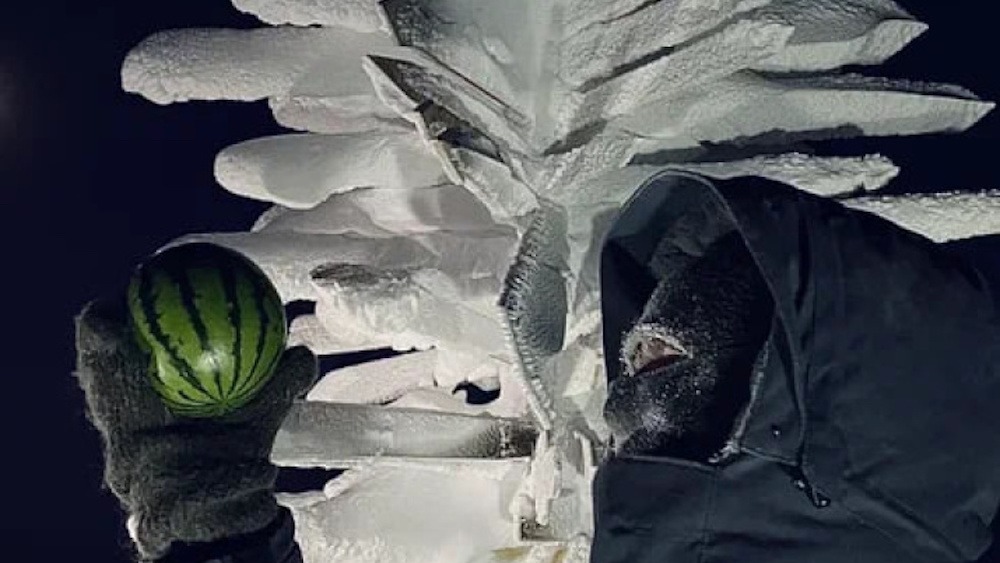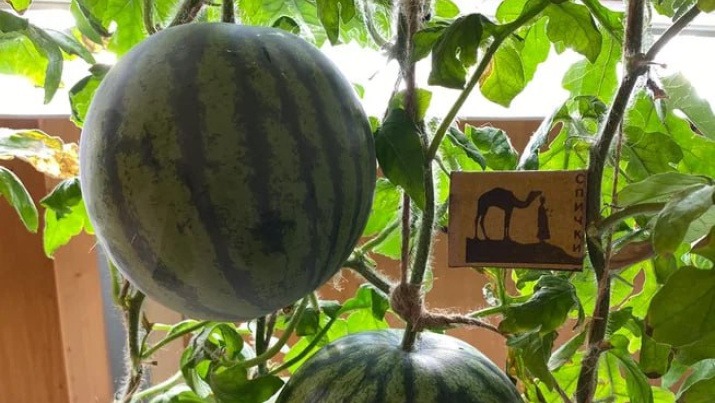
Scientists have successfully grown watermelons in an unlikely place: Antarctica.
The agricultural feat was part of an experiment at Vostok Station, a year-round Russian research station located at the Pole of Cold, so named because it's classified as the coldest place on Earth, where recorded temperatures once reached a frigid minus 128.6 degrees Fahrenheit (minus 89.2 degrees Celsius).
Watermelons arose in what is now Sudan more than 4,300 years ago and show up in the region's ancient artwork, including at an Egyptian tomb in Saqqara. In other words, the berry evolved far away from the frigid environment of Antarctica.
To make Vostok Station's greenhouse more hospitable to watermelons, researchers from the Russian Antarctic Expedition of the Arctic and Antarctic Research Institute (AARI), alongside colleagues from the Agrophysical Research Institute and the Institute of Biomedical Problems of the Russian Academy of Sciences, created an oasis where they could increase the air temperature and humidity to conditions that were favorable to the juicy fruit.
Related: Oldest plant genome on record came from a Stone Age watermelon that grew in the Sahara
The team purposely selected two varieties of early-ripening watermelons not only for their delicious taste but also for their ability to adapt to the low atmospheric pressure and lack of oxygen inside the greenhouse. They planted the seeds in a thin layer of soil substitute and used special lighting that mimicked sunlight. Because there were no insects to pollinate the plants, the researchers were tasked with pollinating everything by hand, according a translated statement from AARI.
Exactly 103 days after planting the seeds, the researchers were greeted by eight "ripe and sweet fruits" growing across six different plants. The melons grew to be up to about 2 pounds (1 kilogram) each with diameters of up to 5 inches (13 centimeters), according to a translated statement from the Russian Geographical Society.

Not only was the experiment successful in proving that, under the right conditions, watermelons can be grown in the coldest spot on the planet, but it also provided an exciting snack to the scientists living in Antarctica's harsh conditions.
"Naturally, all polar explorers were glad to remember the taste of summer," Andrei Teplyakov, lead geophysicist of the AARI, told the Russian Geographical Society. "Even the observation of seedlings, growth and the appearance of fruits … [elicited] positive emotions."
This isn't the first time that produce has been grown at Vostok Station. In 2020, researchers successfully grew a variety of plants, including dill, basil, parsley, arugula and cabbage, according to the statement.
And in 2021, Korean scientists grew watermelons at King Sejong Station in West Antarctica, which had a lowest recorded temperature of minus 78.1 F (minus 25.6 C), according to The Korean Bizwire.
Next up on the menu, the scientists plan to farm a variety of fruit, including blackberries, blueberries and strawberries.







